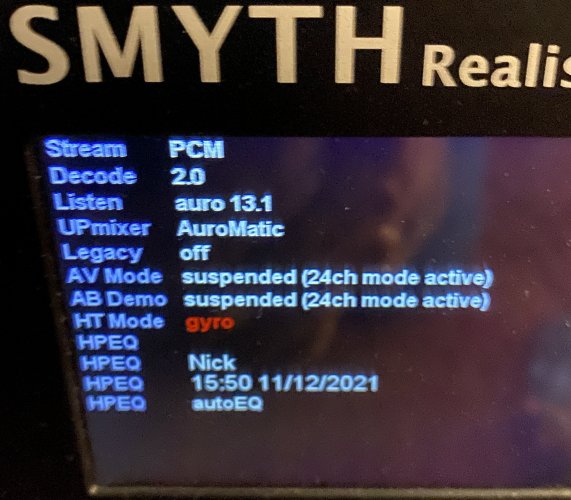JonFo
Head-Fier
I can comment on the A16 vs the APM (source ATV4K) for Atmos movies/shows.While many of us wait for their A16.. has anyone compared the JVC XP-EXT1 vs. the AirpodsMax for Atmos movies only? I have Firestick 4K and AppleTV4k. I know the APMs dont support Atmos with Firestick.
First, I love the APM, they are a pretty amazing headset, sound-quality-wise, they are balanced. They have incredible low-end, almost too good. Watching YouTube videos of people reviewing EV's, the road rumble is palpable, with some serious output down in the 20Hz range. Very low distortion overall, thanks to complete vertical integration of drivers, electronics, and headset.
Of course, the ANC and wireless link are attractions, but I use them hardwired to a laptop (yes, extra D/As and all that) and run them for hours.
Watching movies/shows on the ATV, the APM renders a good immersive bubble, and the head tracking is decent. After a few minutes, I get sucked into the movie and it sounds fine, but I'm aware of hearing a headset, not listening to in-room speakers.
With the A16, not only do I hear the 'signature' of my own Home Theater, it is so natural, that after 10 minutes, I forget I'm wearing a headset and repeatedly am surprised by banging into the tracker, or reaching up to scratch an ear and hit the ear-cup, the illusion of in-room speakers is so strong, one forgets about the headset.
As for positional rendering accuracy, the A16 seems to be much better than the APM thanks to a PRIR and HPEQ, so the HRTF is perfect, and the EQ helps by improving the FR of these old ears.
So for accuracy, the A16 is the winner, but the APM is sooo convenient, since I do not even need to fire up anything except the ATV4K and the TV to watch a Drive To Survive (Netflix F1 show) early on Sunday mornings before a real race, I just pop on the APM and enjoy.












